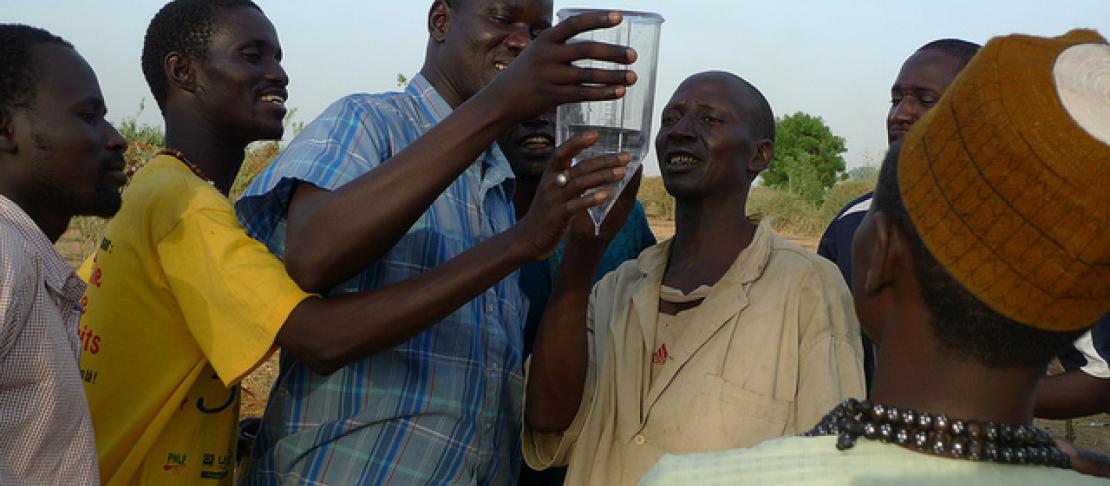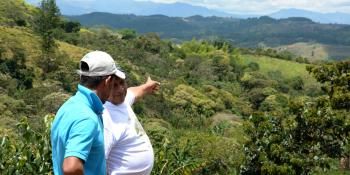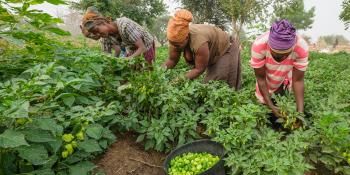Institutions and innovations: How context shapes innovation platforms, agendas, and outcomes

A recent case study in Ghana examines institutional embeddedness, its role in shaping innovation platforms, and the importance of taking context into consideration when planning for development.
Climate change is recognized as one of the greatest threats to agricultural productivity in Sub-Saharan Africa and will occur alongside high population growth – a projected 8 billion people by 2020 - and increased food demand. With such a population trend, agriculture will require a significant transformation to ensure adequate food supplies that will meet the challenges of a growing population and climate change. Innovative products and practices, like those offered by climate-smart agriculture (CSA), can mitigate the effects of climate change and reduce farmer vulnerabilities. Innovation platforms have emerged as a way to enhance the resiliency of agricultural and food systems in the face of environmental change.
Read the case study: How does institutional embeddedness shape innovation platforms? A diagnostic study of three districts in the Upper West Region of Ghana
The broader historical, political, and social context to which platforms are connected – also known as institutional embeddedness – are suspected to influence the goals, processes, and outcomes of these platforms. A recent case study conducted by the International Crops Research Institute for the Semi-Arid Tropics (ICRISAT) in three districts in the Upper West Region of Ghana sought to understand the role of institutional embeddedness in innovation platforms. Such knowledge is critical to improving the design of innovation systems and supportive climate policies.
In each of the three districts, including Lawra, Jirapa, and Nandom, ICRISAT researchers examined platform members’ accounts of the platform formation and selection of facilitating agent, their vision for platform roles, and their understandings of platform agenda and impacts. Facilitating agent were tasked with convening and coordinating the platform’s activities in each district, while the platforms were charged with facilitating climate change responses at the local level and channeling community priorities into national climate change policy discussions. A different type of facilitating organization was chosen by participating platform members in each district, offering researchers the opportunity to study platform processes under various types of leadership.
Beginning with the platform formation, members from each of the three districts chose leading organizations to oversee the platform’s operation. In Lawra, the authority of chiefs made the Traditional Council a natural choice to enforce potentially controversial rules. Due to its long-standing presence in the region and its outreach capacity, the Ministry of Food and Agriculture (MoFA), a government entity, was chosen in Jirapa to coordinate the platform’s activities. Its technical capacity and the long-term experience led platform members in Nandom to choose a local NGO, the Nandom Deanary Rural Integrated Development Project (NONDIRDEP), to lead their platform. Although different organizations were chosen in each district, the links created by each platform between individuals allowed for the sharing of ideas and resources. Researchers, however, did note that the selection choices left out key stakeholders, including representatives from the private sector, farmers, and women.
Interviews with platform members revealed important findings concerning the creation and selection of facilitating organizations including the based on the evaluation of distinct properties, such as infrastructure, resources, capacities, and leadership. These characteristics were considered instrumental in order for platforms to fulfil their envisioned roles. Also, the assessment of different options is influenced by ambiguities and tensions surrounding traditional and modern forms of governance.
Members also described their envisioned goals and agenda of the platform. At Jirapa, about one-third of participants reported the need to raise awareness and provide education around the human causes of climate change, while in Lawra, the creation and enforcement of rules to protect natural resources were also listed as key mandates. At Nandom, 27 percent of respondents prioritized climate change adaptation and mitigation efforts as platform goals. Notably, the integration between local needs and national policy, the original goal behind the platform creation, was not explicitly mentioned by any of the interview participants.
An evaluation of platform outcomes, however, is still premature given the relatively short implementation history and limited funding. Nonetheless, respondents shared their views about changes in their environment, which they observed and attributed to platform activities. Many reported a decline in bush burning, which they linked to the platform’s awareness raising and regulatory activities, especially in Lawra and Jirapa where those activities were central to platform agendas. In contrast, Nandom participants reported more varied impacts from a more diversified portfolio of agricultural, environmental, and livelihood interventions. While these impressionistic responses cannot be taken at face-value as evidence of actual impacts, they are suggestive of how the choice of facilitating agent has implications for steering efforts towards certain outcomes. Major implications of this study include the need to take context into consideration when planning for development and the need for in-depth qualitative research to obtain a deeper understanding of institutional arrangements at play.
Download the study: Totin E, Roncoli C, Traoré PS, Somda J, Zougmoré R. 2017. How does institutional embeddedness shape innovation platforms? A diagnostic study of three districts in the Upper West Region of Ghana. NJAS - Wageningen Journal of Life Sciences.
Kathlee Freeman is a communications consultant with the CGIAR Research Program on Climate Change, Agriculture and Food Security (CCAFS).



